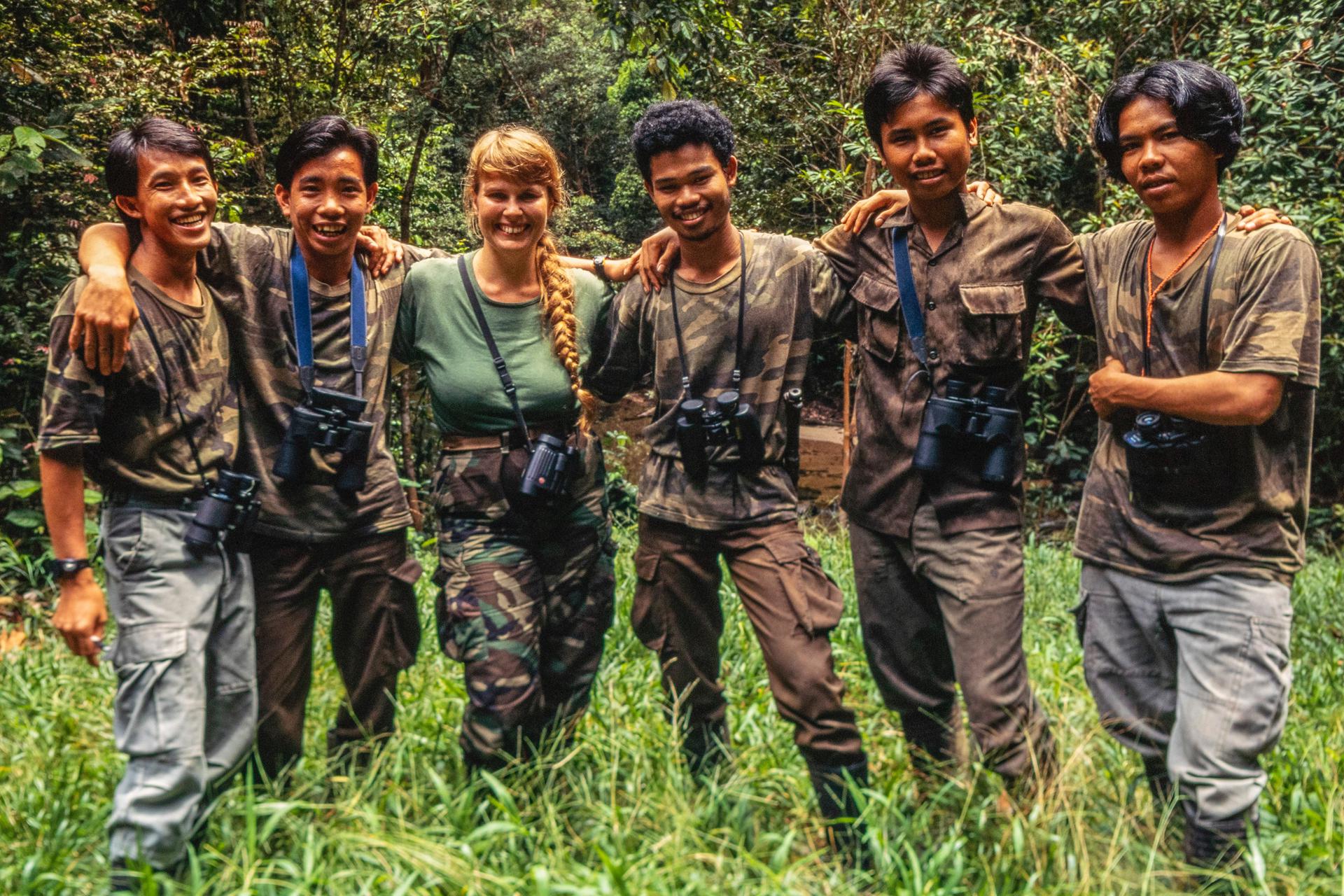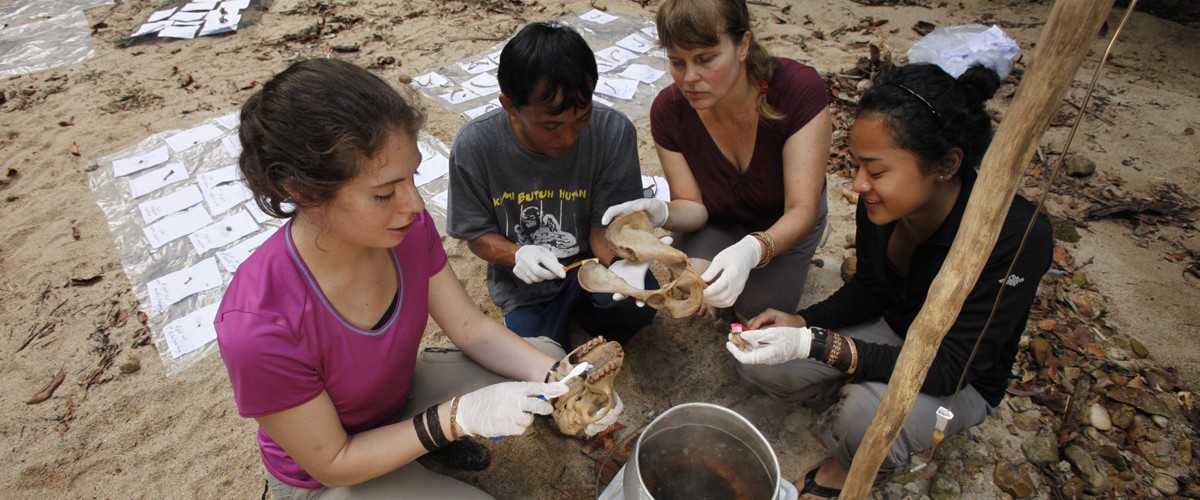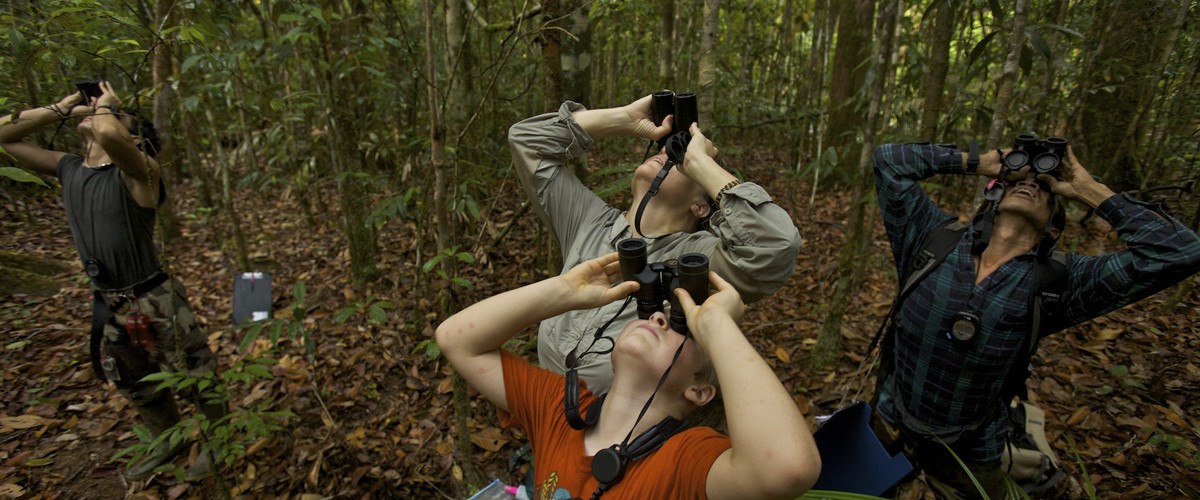By Randha, Field Research Assistant
Over more than three decades, Cabang Panti Research Station (CPRS), in Gunung Palung National Park, has become a gathering place for researchers, both from Indonesia and abroad, to conduct research for undergraduate theses, master’s theses, doctoral dissertations and even postdoctoral/professor’s research. Research has been conducted on a lot of habitats and biodiversity in CPRS, ranging from plants, primates and more. One of the biggest projects to have taken place at CPRS is research on Bornean orangutans, which has been running since 1994 when Dr Cheryl Knott founded the project.
The Gunung Palung Orangutan Project at CPRS created jobs for the surrounding community and has always prioritized working with and hiring people from the local villages around Gunung Palung National Park. Since the start, the Orangutan Project employed people as field research assistants, and one of them is myself! My formal name is Randha by my friends call me “Uteh Lande” or “Landa”. My friends and I were the first to work on the Orangutan Project starting in September 1994.

As research assistants, my friends and I would work to collect data on the wild Bornean orangutans of Gunung Palung. Our tasks included searching for orangutans, observing orangutan behavior, and censusing orangutan nests. We also took phenology data on the trees in the research site. When taking orangutan behavioral data, we would start by recording when the orangutans woke up, and then collected data on their travel, eating, resting, and nest building throughout the day, as well as any other interesting activities.
When we first started collecting data in 1994, we wrote all the behavioral data on paper datasheets. We would then also draw a track of where the orangutans traveled on top of a printed map. (This is very different from today! Now assistants record behavioral data on iPads and use GPS units to digitally record tracks and take waypoint coordinates.) In the early years of the project, assistants worked by following orangutans alone, starting from the morning nest, then swapping out with another assistant at 11am. The next assistant would then follow the orangutan until its night nest. (Now, two or more assistants will go on a follow for the entire day, from nest to nest.)

In 1994 we also all learned to take data on tree phenology. We took data to find out what types of trees were flowering and fruiting each month. We focused on the types of trees that orangutans (and other animals) feed on, in particular. The other assistants and I also used to conduct censuses of orangutan nests each month to observe any changes over time. We recorded the different classes of nest which corresponded to how much they had decayed/fallen apart. I learned so much about orangutans and the types of trees in the CPRS forest. I started to learn, recognize and remember all the types of trees.

In 2002, I decided to end my work with the Orangutan Project. By then I had a family, and wanted to try to find work in my village so I could be closer to them. But destiny brought me back to CPRS in 2007, when I joined the KKL Project (later known as the One Forest Project/OFP), to study red leaf monkeys, gibbons and langurs. I came back to CPRS and was reunited with my friends at the Orangutan Project. I continued my work with KKL/OFP until 2020, when the project halted field research.
I couldn’t believe it when I finished my job at OFP, and said goodbye to all my friends staying at CPRS, that I was asked to come back to join the Orangutan Project again, and lead the phenology data collection. I worried that I was now too old to work in the forest, or needed to take a break, but my love for the forest and CPRS encouraged me to stay and continue my work here. I probably won’t stop until my body feels too tired to walk in the CPRS jungle any more.

So now, for over a year, I’ve been back with the Orangutan Project. I no longer take data on the orangutans, but instead I focus solely on phenology. I take phenology data on plots that were established when researchers first came to the site in the 1980s, and have since been monitored continuously. Every month we collect data from 30 plots and 30 belts all around CPRS. There are approximately 5,646 trees, figs and lianas that we check every single month. I pay close attention to which trees are fruiting to help out the other assistants that are searching for new orangutans to follow. Since I know where the trees are fruiting, I can help them search in areas that orangutans are likely to be found.
I am so happy to be back as part of the Orangutan Project and the Cabang Panti family. Each day I am excited to be able to continue learning with my fellow field assistants.
————-
Management of Cabang Panti Research Station is conducted by the Gunung Palung National Park Office (BTN-GP) in collaboration with GPOCP/YP. Scientific research is carried out in conjunction with the Universitas Nasional (UNAS) and Boston University.









